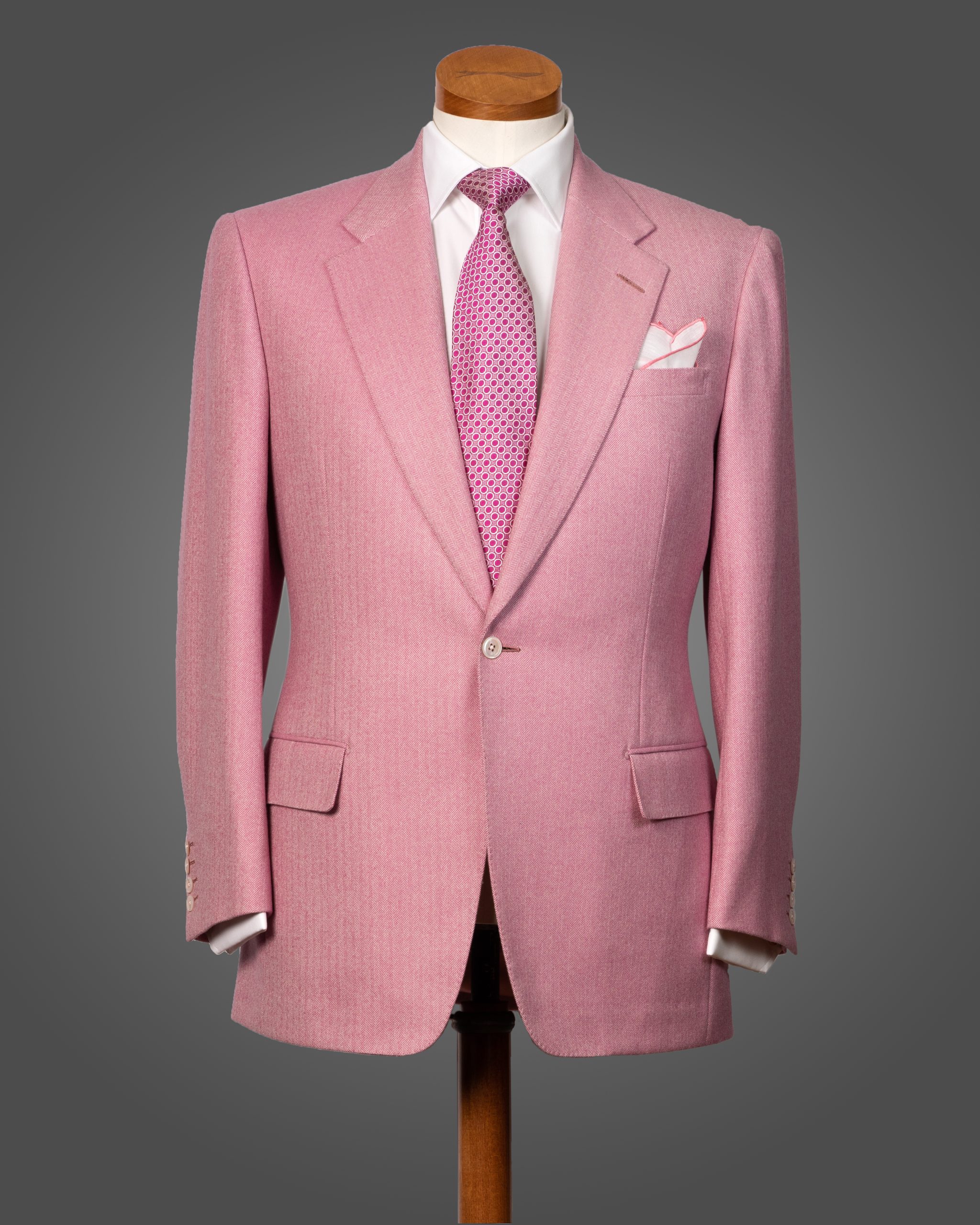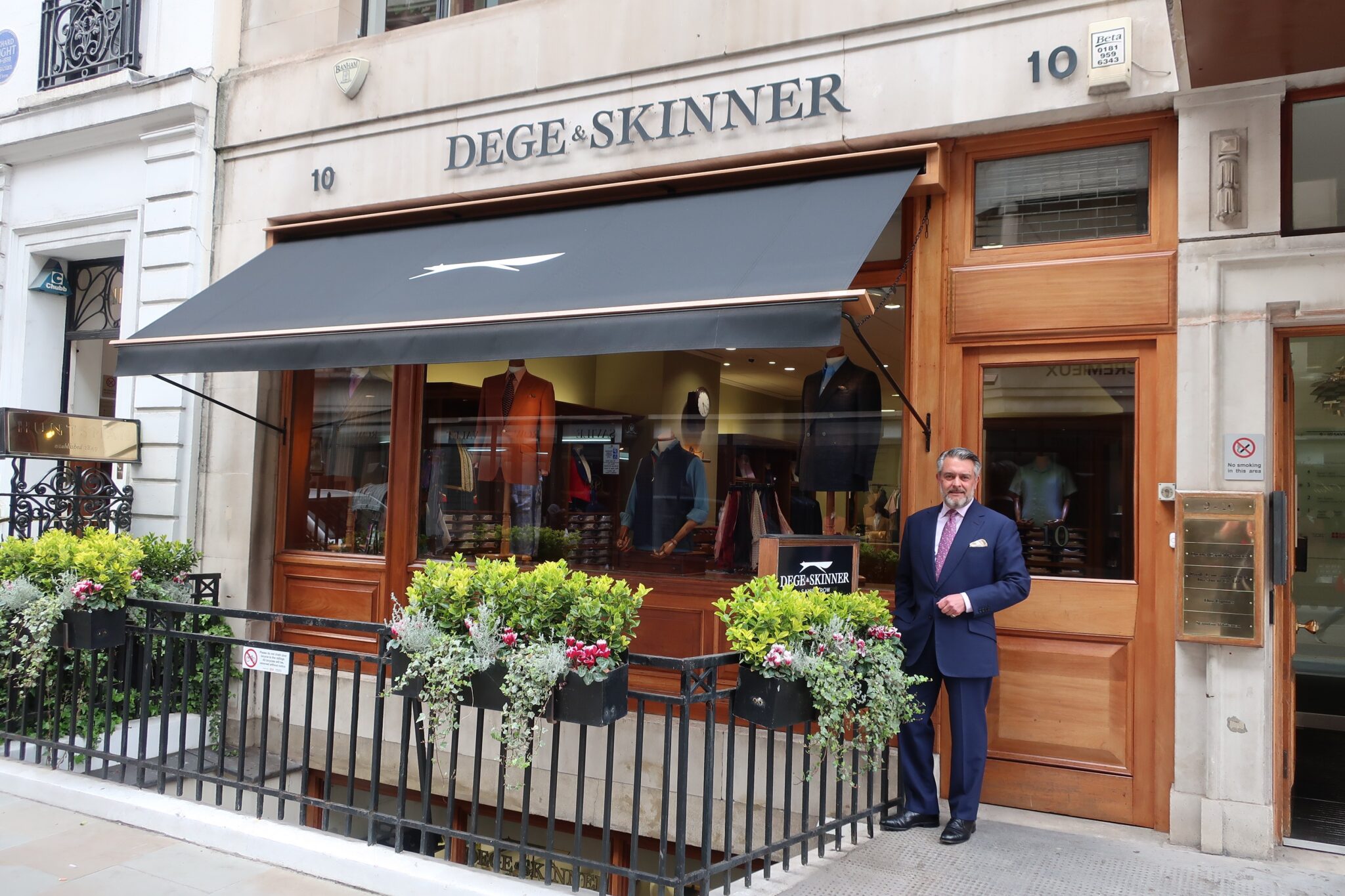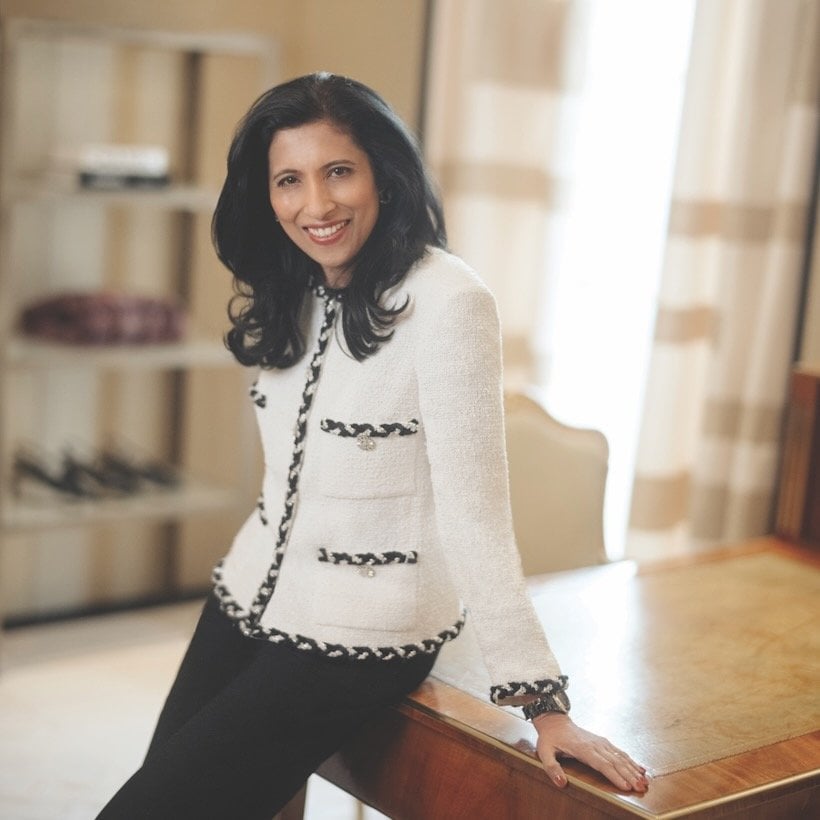Just as a plain white T-shirt or a worn-in pair of blue jeans are staple pieces in every wardrobe, so is a suit. Although we may live in the post-COVID era of remote work, where dress codes have been relaxed and the Mad Men-esque office attire is long gone, the suit is still a necessity. When it comes to dressing for important meetings, family functions, or other high-profile gatherings, there is simply no substitute for it. Further, with the rise of gender-neutral and gender-less dressing, traditional business-oriented suits, which have been primarily associated with men’s fashion in the past, are swiftly becoming essential in everyone’s closets.
Despite the fact that suits hold such a key place in the universal canon of fashion, selecting one that is “right” for you and your individual purposes can be a tall task. Knowing which cut, style, textile, and color to select is intimidating, as there is a slew of options to choose from. Such a broad offering can be made all the more daunting if one is opting for a custom or “bespoke” suit, rather than one that is “ready-to-wear.”

For context, a bespoke suit is made specifically for you, from scratch. It is traditionally crafted by a master tailor based on the pattern that they have created for the client in question. Typically, most bespoke suits are constructed according to the exact specifications of the wearer, with the tailor playing an advisory role. However, for those customers who return regularly to the same tailor, the relationship can become more collaborative. Regardless, a bespoke suit is crafted only for one individual’s frame, meaning that it is not only one-of-a-kind, but guaranteed to have a perfect fit.
The term “ready-to-wear,” refers to any garment that is sold in an already finished state and is available in standardized sizes. For suiting, this means that any coat or pair of trousers purchased off-the-rack either online or in a brick-and-mortar is ready-to-wear. Although these pieces will likely not have as immaculate a fit as their bespoke counterparts, it is not uncommon to have small alterations made to them.
With both categories, the role of the tailor is key. Knowing how you want your suit to feel and fit, as well as what occasion or environment you intend to wear it in is crucial. Even more important, however, is knowing how to effectively communicate those factors to a tailor. For the most classic and timeless fit, there are a few traditional rules that you can follow.

For instance, prior to approaching your tailor with a ready-to-wear suit, ensure that the shoulders of the coat fit properly. Although tailors can make significant structural changes to off-the-rack suits, the shoulders are infamously tricky areas to fix—even for the best. To avoid such difficulty, when selecting a suit, make sure the seams of the jacket align with the edges of your shoulders.
Likewise, for both bespoke and ready-to-wear jackets, request that the jacket be altered so that, when buttoned, it fits just snug enough so that you can easily fit your thumb in between one flap of the jacket and your stomach, when buttoned. If the jacket is too tight, it will crinkle into an “X” shape around the fastened button. With regard to the arms, the most classic look demands that the suit fits comfortably (is not binding) and stops just above the wrist bone. This means that, traditionally, you would only want roughly a quarter inch of the shirt sleeve to peek out of the sleeve.
When it comes to the legs, the most typical fit prescribes that you should be able to pinch approximately one to two inches of fabric on either side of your legs. This will see the fabric will cleanly skimming your silhouette, without clinging to it.
Finally, at the very bottom of the suit sits the break or, rather, the part of the pant leg that sits atop the shoe. Traditionally, “no break,” meaning that the pants end just above the shoes, has been the dominant style. For both custom and finished suits, the break is where the role of the tailor is key. Many ready-to-wear suits are sold with long, unfinished hems, which require a trip to the tailor in order to perfect the fit of the pants.
Nowadays, there are 101 different ways you can get a suit fitted, regardless of gender, that are “in-style.” Suits of all silhouettes, from slim-fit to baggy, are currently dominating the runways and fashion-oriented social media pages of the world. These more trend-oriented styles can easily be sourced from any number of fast-fashion or designer retailers, and, from there, can be made to fit properly with minor alterations. However, for those looking to procure the ultimate timeless suit that will fit perfectly, have longevity, and be appropriate for a myriad of functions, from the office to events, bespoke is largely the way to go.
For custom suiting, there is perhaps no better place in the world than Savile Row. For those who may not be familiar, Savile Row is a street in London on which some of the world’s premier tailors and bespoke houses are located. Beginning in the late-18th century, tailors began doing business in the area. However, it wasn’t until 1846, when Henry Poole, a tailor who would later be credited with creating the dinner jacket, opened his shop on the street that others began to follow suit. Since then, these shops have earned global notoriety, attracting a high-profile clientele that includes politicians, celebrities, and royalty.
One of the most historic of these houses is undoubtedly Dege & Skinner. Established in 1865, Dege & Skinner is one of just two family-owned bespoke shops still operating on Savile Row and holds Royal Warrants of Appointment to HM Queen Elizabeth II, HM The Sultan of Oman, and HM The King of Bahrain. With deep roots and long-perfected techniques, the house boasts a global customer base and has dressed some of the world’s foremost household names, including Sir Winston Churchill, Prince Harry, and President George H.W. Bush, to name a few.

In order to adequately gauge the current pulse of the bespoke suiting world, Worth sat down with MD William Skinner, the fifth generation of his family to participate in the business and its Managing Director since 2001. Employing roughly 20 craftspeople and running both the bespoke shop and its ready-to-wear division, Skinner is actively upholding not just the history and quality of the shop, but also that of Savile Row as a whole. At the same time, through the house’s apprenticeship scheme, he is ensuring the continuation of the skills and traditions of the bespoke industry.
Powless: In your view, what are some of the key differences between a RTW suit and a custom suit? What are the key advantages of procuring a bespoke suit?
MD William Skinner: I suppose the best way to start is to clarify how a ready-to-wear suit is made, as opposed to a bespoke suit. We will have a ready-to-wear suit made in a factory to our specifications, so it’s cut to our house style, and it’s made up in fabrics that we’ve picked out. A customer will then come in, try it on, and we will be able to make only minor alterations to it. We won’t get into anything too structural, in terms of changing the existing dynamics of the suit. So, [ready-to-wear] works very well for customers that fit into stock sizes.
With bespoke on the other hand, the customer has input into everything: you can choose the fabric, select the style, whether you want double- or single-breasted, if you want turn-ups on the trousers, belt loops, or wear suspenders. The world is your oyster. Then, you have your measurements taken, have your own pattern drafted, and have fittings to, ultimately, get to the suit of your specifications. There’s a lot that goes into the process and it’s very much managed by hand, and you have different people handling each part of the process the whole way through.
Ultimately, there’s a big difference between ready-to-wear and bespoke. Bespoke caters to any figure. If someone also has an interest in clothing and having things made by hand in an artisanal way, then bespoke is what that’s all about. It’s the ultimate ability to be able to craft something, individually, for yourself that no one else will have. It’s the ultimate form of luxury.
If a client is looking for a suit that would be considered “timeless” or “classic,” and can be worn on a multitude of occasions, which standard styles or fabrics would you recommend?
There are different types of customers. There’s the customer who will want to try different styles, from single- to double-breasted, to turn-back cuffs, to sloping pockets, to straight pockets to combine different elements together. That is at one end of the spectrum. At the other end, you have a customer who wants that very classic, smart-looking work suit. Generally, a lot of those outfits are darker colors or plain colors, which stay inside the classic dress code or the comfort zone of an organization. For that, we do recommend and see our customers lean more towards a lot of dark blues, blue stripes, and blue herringbones, as well as the traditional single- and double-breasted styles. So, those are generally the go-to fabrics and styles that we do advise on.
What do you believe are the most important factors that people need to take into account, physically, personality-wise, or trend-related, when selecting a particular suit style for themselves?
A number of customers are very well-researched and they come to us for guidance. It’s a case of getting to know a bit about their life, in terms of what they do, if they travel, where they live, the environment they’re working in, and the clothing that they’re expected to wear. For example, the advertising world is much more casual these days and you rarely see a suit. However, there is always a requirement for a smart suit for a smart occasion for everyone, regardless of what anyone says. Some people will just say, “Look, you’re the expert, you kit me out in whatever you think I need.” Sometimes, that’s a bit more difficult than working with someone who’s got some preconceived ideas of what they want to achieve. Then, that’s a symbiotic relationship where you work very well together, and you work on things as time goes on. It makes it a bit more interesting for everyone to incorporate different things and try different things.
Historically, people have considered the tailoring industry to be male-dominated, and even the process of getting a bespoke suit is one primarily solicited by men. With a growing demand and affinity for female suiting in the fashion industry, are you seeing more female tailors coming to the fore of the field?
From our experience here, yes, it’s always been a male-dominated industry. I joined 32 years ago and, back then, we were employing the first female cutter on Saville Row. Since then, we’ve had two female cutters, one of whom has recently joined us as an apprentice cutter. Out of the 20 members of staff, 10 are female, and over the last 15 years, the trade has been concentrated on training the next generation of tailors. As a collective, we got to the point of realizing that a lot of coat makers, cutters, and trouser makers are getting quite old. We need to glean their skills before they move onto the next world. So, we indulged in apprenticeship programs for coat-making and trouser-making, and a lot of the applicants were women. I’ve always been a big believer in the fact that, if you’ve got the passion, skills, tenacity, and application, it doesn’t matter one iota. As a result, most of our apprentices were ladies and we’ve had some wonderful female coat and trouser makers that we’ve trained over the last 15 years.
In recent months, generative artificial intelligence (AI) technologies have proliferated in the fashion space. Of course, this includes AI tailors. In your view, what are the key differences between human and AI tailoring? What do you believe are some of the advantages to having a human, as opposed to an AI tailor construct a suit?
AI is obviously a much talked about subject at the moment and there’s still a lot to be gleaned from it. I’m sure that AI will be used quite a lot throughout the world, but how AI can pick up a pair of shears, design a suit, choose a fabric for someone, and replicate what we do here, I’m not convinced. Our business is all about personal interaction with the customer, which we have with our customers with the measuring and fitting. That’s part of the process and theatre of what we do as bespoke tailors. Especially for us, having the physical presence, both here on Saville Row, and when we go abroad to meet our customers, it does mean a lot. We’ve got history and we’ve got presence. Bespoke tailoring is all about touching and feeling, and AI will never be able to recreate that. Also, the excitement of choosing your first suit; I did it 35 years ago and my son’s just done it. He was so excited about the process of it and picking out the fabric, and that’s what it’s all about. It’s about connecting with the process of craftsmanship, which, in this day and age, doesn’t happen all of the time. But, we’re here to stay.










